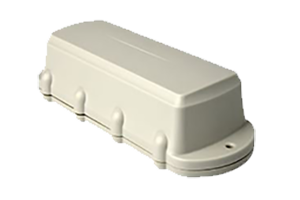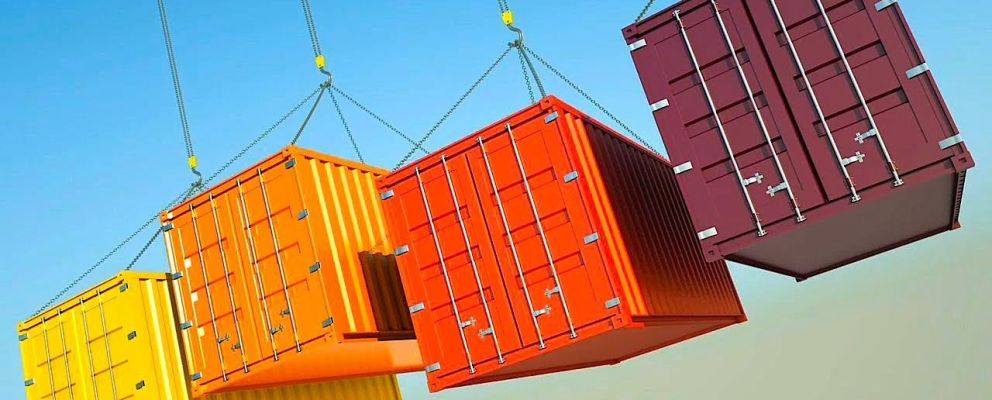Do you run a business? Reflect on all your physical assets. You will realise that you may have more than you can grasp. If so, then it is time for you to improve your asset tracking methods.
But what exactly is asset tracking? Will you really benefit from it?
Defining Asset Tracking
Also known as asset management, asset tracking is the practice of tracking physical assets. There are various ways to accomplish it, including scanning barcode labels and using RFID tags. Whichever method you choose, your business can truly benefit from it.
The purpose of asset tracking is simple. Think of it as the same thing you do when you manage your inventory. It allows you to know the location and status of your organisation’s assets. Depending on the method you use, you will know the most critical pieces of information on one platform.
Without a doubt, asset tracking is essential to any business’ bottom line. It also helps with compliance requirements since business owners are responsible for knowing where their physical assets are. When you can track it, you can locate the missing item. You also avoid extra expenditures due to replacements.
In many cases, you can use asset tracking to determine which goods have reached the end of their lifecycle.
Why Every Business Requires Asset Tracking
When you have an asset tracker, it easily takes out the manual labour for the process. This way, you can focus on other things that can help expand your business. Here are the top benefits of asset tracking in any industry:
Lower administrative overhead costs

Running a company is undoubtedly costly. Unlike manufacturing expenses, many administrative costs do not change. Revenues may go up or down, but these expenses will rarely vary from one month to the next.
Reducing administrative expenses is necessary for the company’s profitability and success for the long-term. There are a few proven ways to cut administrative costs, and one of them is through asset tracking. It eliminates the need for a part of the workforce to track assets manually.
Using a piece of software or device (such as the SU-6800 – pictured) for asset tracking also reduces human error, which could result in costly mistakes, such as asset loss.
Additionally, it is a way to assign more people to other responsibilities that can potentially improve the company’s profitability.
More savings
Aside from cutting some of the administrative expenses, asset tracking also helps avoid unnecessary costs. Companies typically allocate a budget for repairs and maintenance. However, it is always crucial to determine the lifecycle of assets, especially those used for projects that can take several months to complete.
Asset tracking allows you to record useful information about a certain item. Details, such as when it was purchased, the frequency of use, and its scheduled maintenance, you can have an effective plan for replacements.
When you have an unproductive item, it can quickly inhibit your operations. Often, it leads to expenses that you do not even need. All these problems can be prevented with asset tracking.
Improved customer service
Any enhancement taking place in your business is evident to your customers. Therefore, when you have a well-stocked inventory, they will be appreciative of all the internal improvements. Your employees will be better informed as well, along with a more efficient operation overall.
Maintaining accreditations
You need to stay in compliance with specific regulations. Some certifications can be fulfilled with the help of effective asset tracking. A good solution can help you track and manage your goods and supplies, so your business is in line with any legality.
Better accuracy
Asset tracking is valuable because it provides high-level insight into your business’ performance and the available physical spaces. You can use it to manage your office, storage, or warehouse. This way, you can identify specific links on how these segments use assets, leading to a more streamlined business operation.
Data tracking also aids in anticipating asset requirements even before something becomes necessary, such as maintenance of equipment.
On this level of insight, you certainly understand your assets better – from their location to how they are utilised in the business to the needed actions that will keep the assets in good condition. It eliminates all the guesswork, especially because tracking reports are there in front of you as well. You can use the data to make better and wiser decisions for your business.
Whether you have a big organisation, a start-up, or even an online firm, you can benefit from asset and inventory tracking.
What are the Top Ways to Track Your Assets?
Asset tracking is possible with the use of a specific piece of software. The solution will let you see the full picture of physical assets in your organisation. Some details include maintenance, costs, and utilisation. With the information gathered, you can plan for the growth of your business smartly.
Compared to manual asset tracking, you can easily scale your business for growth and development. Using the solution allows you to identify the trends in asset utilisation. Most of the time, you can track almost all assets that you have using the software. But some are necessary for doing inventory, and they include:
- Office furniture
- Heating and cooling equipment
- Carpets
- Boats
- Manufacturing and construction equipment
- Caravans and other vehicles
- Lighting
- Signs
- Computers
- IT tools, hardware, and software (including licences)
- Printers, copiers, and similar devices
- Personal protective equipment (PPE)
You can create customised reports for the mentioned assets. This way, you know everything, including maintenance, lease, or contract details.
Tracking assets has indeed come a long way. Here are some of the various methods for tracking and which among them is the best:
- Manual Tracking: We all know what manual tracking is. In fact, many companies started with this method. Even during this modern era, they still stick to manual monitoring. It is performed by counting each piece of item you have to know the starting and ending inventories. With the numbers down, they may have tried to categorise the items by name, pricing, and other details. Manually counting the assets is certainly cheap because you do not have to pay for the costs of the software application. However, it is prone to errors and not entirely free, since you have to pay for labour costs as well.
- Spreadsheets: Tracking using spreadsheets is easy, which is why they are the preferred way for many companies. Unfortunately, you cannot use worksheets today, especially with the competitive business environment we have now. You will not get reliable data, particularly these days, when budgets and spending can limit daily operations. You require as much detail as possible about your inventory. Asset tracking through spreadsheets can only give you so much data. You cannot get alerts, such as when equipment requires maintenance or update. Also, it cannot be error-free since you will need to enter data manually.
- Asset tracking software: With so much competition today, you cannot turn to guesswork to help your business out. Tracking software platforms are similar to inventory managers, but they are automated. Several solutions allow you to track the lifecycle of an asset. Therefore, everything is on record from the time this asset was acquired to its possible retirement from use. Some platforms also let you scan a barcode, in which your employees can use their smartphones or tablets. Mobile capability makes operations smoother and more efficient.
Out of all the methods above, it is clear that using advanced asset tracking software is the best solution. There is no one-size-fits-all approach here. Some platforms are customised to a certain industry, which makes choosing the software or device much more straightforward. There are no limits, as well. These solutions are designed to evolve according to the needs of your business. Some can be linked to your existing data and are upgradeable as well.
How to Choose Your Asset Tracking Device
It is easy to get lost in the sea of choices when it comes to asset tracking. We will help you find the best device so you can track your assets effortlessly and effectively:
1. Make sure it can locate items indoors.
A huge problem with many trackers is that they cannot find items when they are in a basement, warehouse, or anywhere indoors. When you want to track parcels, bikes, or even animals, you want to make sure the tracker is reliable – even when it is inside a building.
One tracking device that will surely never let you down is a WiFi sniffing asset locator. It can look for WiFi access points and the strength of each signal. With the information gathered, a quick survey of the area will provide an accurate location of the needed item. The result is quick and saves a lot of battery – even better than a GPS solution.
2. It should provide very detailed reports.
![]()
You want to know where an individual asset is located. You also wish to get more information about it, such as the date and time of purchase and the scheduled maintenance
A web-based software solution connected to the asset tracker should be in place. This piece of software should give you all the details you need at a glance. This way, you will not have a hard time finding the data you require for evaluating an item.
Web-based software should also be intuitive and easy to use. It is always better to select a product that allows you to set geofences. For instance, you have a vehicle arranged to deliver a product to a precise location. If it goes somewhere else or is not on schedule, you will quickly receive alerts about it.
Reports should be detailed but only with useful data. Other platforms will bombard you with worthless telemetry information when all you need is a map display, along with events and alerts. Stick to the most uncomplicated choice available.
3. Choose a solution with no lock-in contracts.
Depending on your business and its requirements, you may opt for a tracker that comes with a lock-in period. Often, they benefit you because you can get excellent customer service and assistance throughout the duration of the contract.
However, for many businesses, no lock-ins are the better option. The SU-6800 Mini is ideal in this case. You can cancel the subscription anytime or suspend it without cancelling. This way, you can delay the payment and resume whenever you need the service. Usually, you will have to pay the reconnection fee if you wish to use the tracker again.
No lock-in contracts benefit those in several industries, especially workers with seasonal projects. You do not have to pay for the time you do not use the product. You can simply resume its operations when you are ready to start another project.
4. Battery should last for a long time.
The last thing you want is the battery dying when you need it the most. A heavy-duty battery installed in your asset tracker is a must. If the inevitable happens, the device should be able to send you battery alerts. You can change the batteries before they die.
In line with batteries, you should also look for a device that can be fitted with 1.5V lithium batteries. The device will operate seamlessly even in cold temperatures.
5. Determine the best power source for your needs.
Asset trackers can either be battery or solar-powered. Some use satellite, Bluetooth, or 4G to obtain data. Your choice will depend on how you transport and store your assets. For instance, container and plant tracking are best performed with a solar-powered device, for example the SU-6300. It will charge itself using sunlight, which is quite convenient.
On the other hand, if the assets are mainly indoors, battery-powered trackers with inputs are a good solution. Satellite trackers, such as the SU-6400, are a great option if you want quick response times and get data you need in real-time.
Asset tracking is indeed a requirement for every business. Both the hardware and software will allow you to keep tabs on equipment, vehicles, and other vital items. Tracking is useful for goods and assets that operate every day. It is also essential for tracking those that may have to stay in your warehouse for an extended period.





